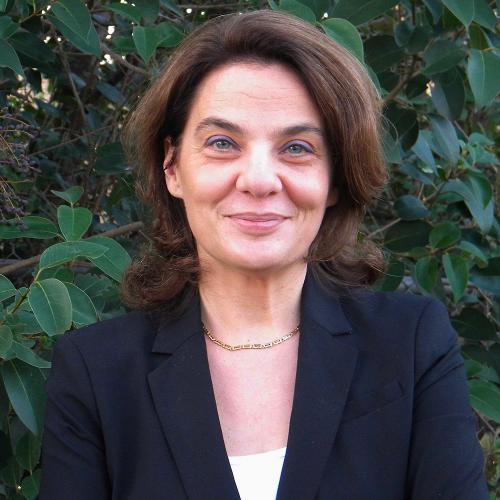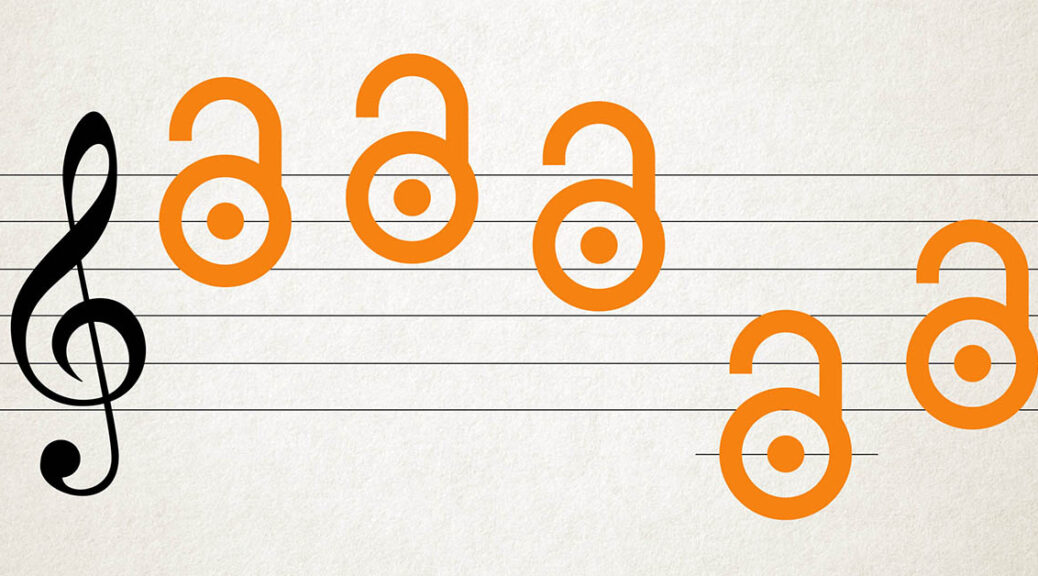Dr. Luisa Nardini is an Associate Professor of Musicology and the Division Head of Musicology and Ethnomusicology at the University of Texas at Austin. In Fall 2021, she was selected as a participant in the “Fostering Inclusive Classrooms with Open, Free & Affordable Course Materials” instructor learning community hosted by the Open Educational Resources (OER) Working Group to promote the UT Libraries ideals of inclusion, diversity, equity, and accessibility (IDEA). Ten instructors from across disciplines came together to learn about and apply efforts to reduce the cost of required materials in their courses. Over six weeks, Dr. Nardini and her colleagues discussed a range of topics including finding and evaluating OER, enhancing the accessibility and cultural responsiveness of course materials, and integrating other open education practices into their teaching.

Dr. Nardini shares her experience in the learning community with us.
Q: What motivated you to apply to join the “Fostering Inclusive Classrooms with Open, Free & Affordable Course Materials” learning community?
A: My initial motivation was to do exactly what was indicated in the course title: to explore Open, Free, and Affordable Course Materials for a new class titled “Global Music Traditions ca. 700-1400.” I started teaching this class in the Spring of 2021 to move from the primarily Eurocentric focus of my previously taught course “Advanced Studies in the History of Music: Medieval” toward the global perspective of the current version. One of the main challenges for this course was to find scholarship that covered a variety of topics not generally included in college and university textbooks (or certainly not in a single book), but that could be nonetheless manageable and coherent. My main concern was to center course content and materials around notions of diversity, globality, and multilingualism, while considering affordability and OER. Not only it was difficult to find available scholarship, but it was even more complicated to locate works by authors from under-represented communities.
Q: Has affordability always been something you consider when evaluating course materials? How have you seen cost impact your students?
A: I have always considered affordability in all my courses and generally opted for inexpensive or free publications in my classes. This led me to adopt less costly textbooks or to use library materials whenever possible. Although coming with no additional costs to students, many library resources are only available through library subscriptions, though, which means that they become unavailable to students after graduation. The model of open educational resources is very appealing to me and certainly more equitable because it allows for larger learning communities without the limitation of institutional affiliations. University students benefit from this model not only because they can have materials available to them after the completion of their degree, but also because of the amplified learning communities deriving from OER. For example, a student can discuss with individuals with no academic affiliations through social media, blogs, and so on, thanks to the unrestricted availability of resources.
Q: Your teaching often centers on medieval music, and you focused on locating materials for these classes in the learning community. What makes it so important to include a variety of resources in this course?
A: It is absolutely crucial that students see the complexity of the medieval world, which was much more diverse and interesting than we tend to think. For instance, in my course students learn that women often held positions of power and were spiritual leaders as well as artists, intellectuals, and scientists. Depending on place and time, societies were highly diverse and some of the most advanced intellectual circles were truly ‘international,’ to use a modern term. People, but most importantly their work, travelled around the globe. Web-based resources help diversify not only the content of the course, but also the representation of authors and learners.
Q: Did you find any OER or otherwise freely available resources that you’re excited to use in your classroom?
A: Yes, I did find many. My main goal for the class was to develop two modules on notational and theoretical systems, two topics that students find particularly challenging. These are difficult subjects because of their technicalities and because of the large variety of notations and musical theories developed over the course of several centuries throughout the world. In doing my research for the OER course I found this article on Guqin notation (a Chinese stringed instrument) by Eric Hung, that I am certainly going to use because of its clarity, but also because it belongs to a larger resource that is tackling issues of decanonization and decolonization of the music curriculum (see for instance Kunio Hara’s article on Madame Butterfly). Another resource that was not new to me, but that I am certainly going to use in class is this Youtube video that one of my students created as a final project for a previous class. In the video, Aruna Kharod compares the European model of the Eight modes with the system of Indian Ragas. The video is excellent because Kharod is an expert of Indian music and learned about the eight-mode system in my class. The video is not only accurate, however, but also very effective in terms of length, visual impact, and musical examples (she did her own singing).
Q: What topic in the learning community did you find most interesting or surprising?
A: I found it particularly useful to learn about the different kinds of licensing, which has clarified many aspects of OER for me, and also about online textbooks resources. For the latter, unfortunately, I could not find much content that was relevant to my own course, but I am sure I will use the materials for other classes. The module on licensing has allowed me to understand what can and cannot be done with OER.
Q: What advice would you offer colleagues who are interested in integrating open and affordable materials into their courses?
A: As academics we are generally very busy and might, therefore, refrain from undertaking tasks that seem very demanding on our own time. I would, however, encourage everyone just to start working on OER, maybe taking advantage of the extraordinary resources and staff at the university library. In addition, like with any other new directions we undertake in our pedagogy, we can do things in stages, adding something new or tweaking old resources and tools at each new iteration of a course. We don’t need to have everything in place at once, but we should certainly move away from the costly textbook model. It is not only inequitable, but often pedagogically limiting.
If you are interested in exploring open, free, or low cost course materials, get help by contacting Ashley Morrison, Tocker Open Education Librarian (ashley.morrison@austin.utexas.edu).

